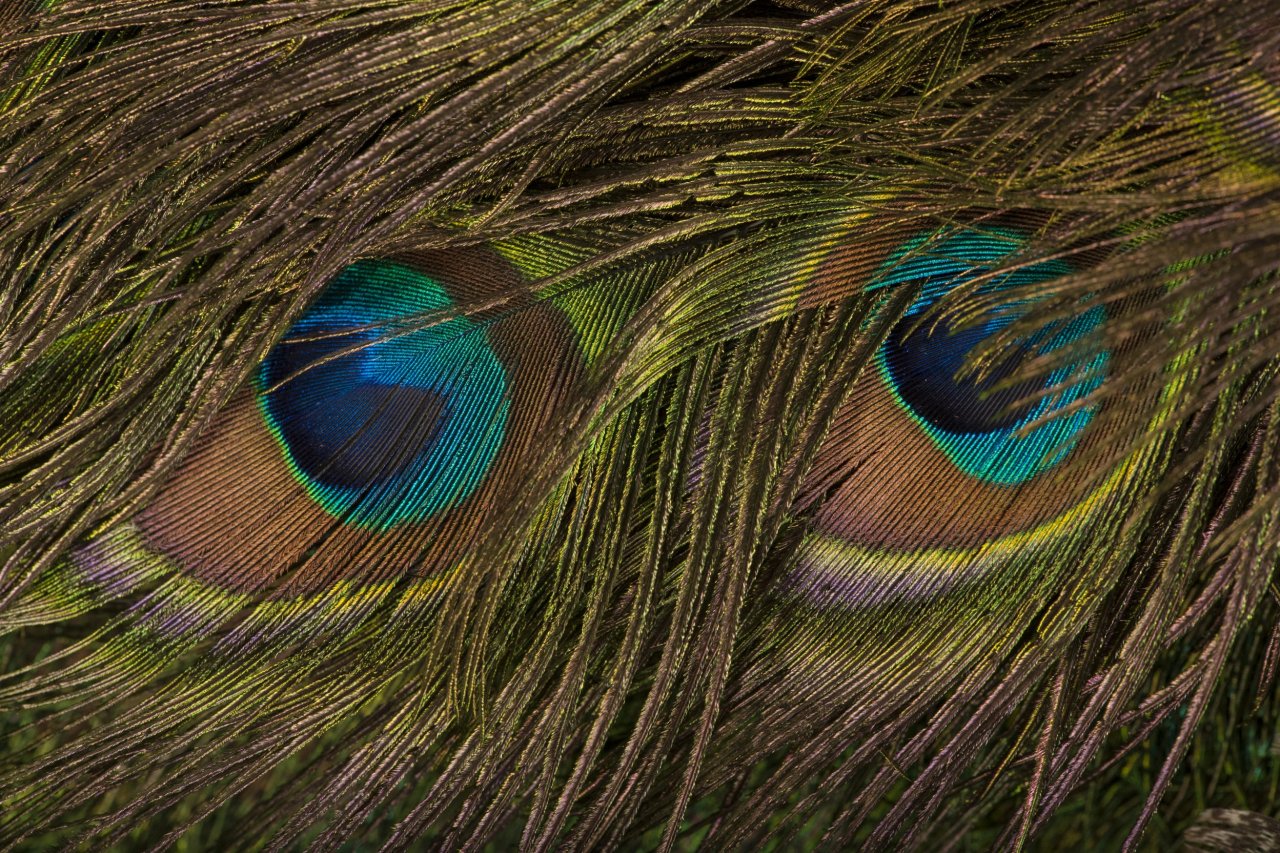There are few avian creatures more striking than the peacock. The male peafowl stomps and screams, struts with his crested head held high and, when displaying his elongated train of tail feathers, appears like a walking rainbow.
One of the most fascinating aspects of the peacock's elaborate plumage is its color, an iridescent blue-green-gold. The iridescent coloring, which changes appearance based on both the angle light hits the bird or the angle at which you see it, has nothing to do with the actual pigments in the feathers but is instead due to nanostructures of fiber-like components that interfere with light and, essentially, cause the bird's tail feathers to play tricks on your eyes.
This is called structural coloration—which can also be seen in other creatures, like morpho butterflies—and it was the inspiration for a team of University of California, Berkeley, engineers who recently announced in the journal Optica the design of a new material that can be made to change color simply by applying a tiny bit of physical force. They're calling it a "chameleon-like skin."
To create the material, the team etched rows of ridges onto a single layer of silicon, just 120 nanometers thick. For scale, consider that a human hair is about 100,000 nanometers thick. The ridges are cut at an angle, and when the rows are just the right distance apart, they reflect only a precise wavelength of light, i.e., a specific color. When you bend or flex the silicon, the spacing between the ridges changes, shortening or lengthening, and the color shifts.
The first piece of material the team manufactured generated colors that could shift from green to yellow, orange and red. The researchers believe they can figure out how to create almost any color.

For testing purposes, the team created just one square centimeter of the material. The next step, says study co-author Connie J. Chang-Hasnain, is to scale up to a size practical for commercial applications. No worries: There already are facilities out there with the capability to do it, she says.
And because the stuff is so thin and pliable, its potential seems nearly limitless. The obvious application is camouflage: A tank or other military vehicle sheathed in a material that could change colors depending on its surroundings would be a powerful weapon. The design, says Chang-Hasnain, could be adapted so that, for example, the color change could be done by applying a slight electrical charge to the material. It's something "we intend to do in the future," she says.
Chang-Hasnain also suggests that the silicon design could be applied toward the development of ultra-sensitive and easy-to-read sensors that would change color to indicate otherwise imperceptible changes in "structural fatigue" in things like bridges and the wings of airplanes. "When a structure is under stress or strain, it may expand or shrink," she says. "The flexible 'skin' attached to such surface would be stretched or squeezed," which would then change its color.




























